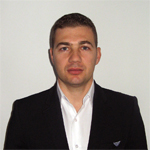FACTORS WHICH AFFECT THE OPERATIONAL PHYSICAL PERFORMANCE OF SERVICEMEN
DOI:
https://doi.org/10.12753/2284-9378-20-08Abstract
: Minimizing the importance of the human body and its possibilities for adapting to the conditions of an armed struggle, with the emphasis being increasingly placed on the technological revolution and in the military field, may be a disadvantage for carrying out the assigned missions. This adaptation of the human body is conditioned by the positive influence of individual factors or of factors independent of the purely physical component.
This article addresses a number of factors that may influence the operational physical performance of servicemen, factors that, neglected, may lead to the failure to perform the received military tasks. The role of the information presented in this material is to raise awareness that the accomplishment of the objectives in the missions carried out by the military, is not conditioned only by the specific training, technology and the act of execution, but also by the cumulative approach of these factors.
References
RTO-TR-HFM-080, NATO, Optimizing Operational Physical Fitness, Research and technology organisation, 2009.
Băițan G.F., Pregătirea fizică a militarilor din armata României în contextul întegrării în NATO, “Carol I” National Defence University Publishing House, Bucharest, 2019.
Ciapa G.C., Orientări și oportunități pentru pregătirea fizică a militarilor, “Carol I” National Defence University Publishing House, Bucharest, 2019.
Ciapa G.C., Pregătirea fizică a militarilor din armata României în conflictele moderne, “Carol I” National Defence University Publishing House, Bucharest, 2018.
Goldman R.F., Introduction to Heat-Related Problems in Military Operations, in „Pandolf KB, Burr RE, eds. Medical Aspects of Harsh Environments, Washington, Borden Institute”, 2001.
Hoyt R.W., Buller M.J., DeLany J.P., Stulz D., Warren K., Hamlet M.P., et al., Warfighter physiological status monitoring (WPSM): Energy balance and thermal status during a 10-day cold weather US Marine Corps Infantry Officer Course field exercise. Natick, MA: US Army Research Institute of Environmental Medicine, Technical Report T02-02, 2001.
Janssen I., Heymsfield S.B., Wang Z.M., Ross R., Skeletal muscle mass and distribution in 468 men and women aged 18 - 88 yr., J Appl Physiol, 2000.
Johnson R.F. & Kobrick J.L., Psychological Aspects of Military Performance in Hot Environments, în D.E. Lounsbury, R.F. Bellamy & R. Zajtchuk (eds.), Medical Aspects of Harsh Environments (vol. 1), Office of The Surgeon General Department of the Army, United States of America, 2002 apud M. Popa, Psihologie militară, Polirom Publishing House, Iaşi, 2012.
Juopperi K., Hassi J., Ervasti O., Drebs A., Näyhä S., Incidence of frostbite and ambient temperature in Finland 1986-1995. A national study on hospital admissions. Int J Circumpolar Health, 2002.
Kraemer W.J., Mazzetti S.A., Nindl B.C., Gotshalk L.A., Volek J.S., Bush J.A., et. al. Effect of resistance training on women’s strength/power and occupational performances, Med Sci Sports Exerc, 2001.
Leyk D., Rohde U., Erley O., Gorges W., Wunderlich M., Rüther T., Essfeld, D., Recovery of hand grip strength and hand steadiness after exhausting manual stretcher carriage. Eur J, 2006.
Montain S.J., Young A.J., Diet and physical performance. Appetite, 2003.
P.H. Andrew, C.B. Daniel, J.P. Mark & N.C. Joanne, Heat strain during military training activities: The dilemma of balancing force protection and operational capability, Temperature, 2016.
Popa M., Psihologie militară, Polirom Publishing House, Iaşi, 2012.
Sawka M.N., Wenger C.B., Pandolf K.B., Thermoregulatory responses to acute exercise-heat stress and heat acclimation. In: Handbook of Physiology, Section 4: Environmental Physiology. Edited by M.J. Fregley, C.M. Blatteis, Oxford University Press, New York, 1996.
Shephard R.J., Exercise and training in women, Part I: influence of gender on exercise and training Responses. Can J Appl Physiol, 2000.
Shippee R., Friedl K., Kramer T., Mays M., Popp K., Askew E. et al., Nutritional and immunological assessment of Ranger students with increased caloric intake, Natick, MA:US Army Research Institute of Environmental Medicine, 1995.
Tharion W.J., Lieberman H.R., Montain S.J., Young A.J., Baker-Fulco C.J., DeLany J.P., Hoyt R.W, Energy requirements of military personnel. Appetite, 2005.

Downloads
Published
How to Cite
Issue
Section
License
The published articles are subject to copyright law. All rights are reserved to the “Carol I” National Defense University, regardless of whether all or part of the material are considered, especially the rights to translation, reprinting, re-use of illustrations, quotations, broadcasting through the media, reproduction on microfilms or any other way and storage in data banks. Any replicas without the associated fees are authorized provided the source is acknowledged.

 BULLETIN OF "CAROL I" NATIONAL DEFENCE UNIVERSITY
BULLETIN OF "CAROL I" NATIONAL DEFENCE UNIVERSITY 

